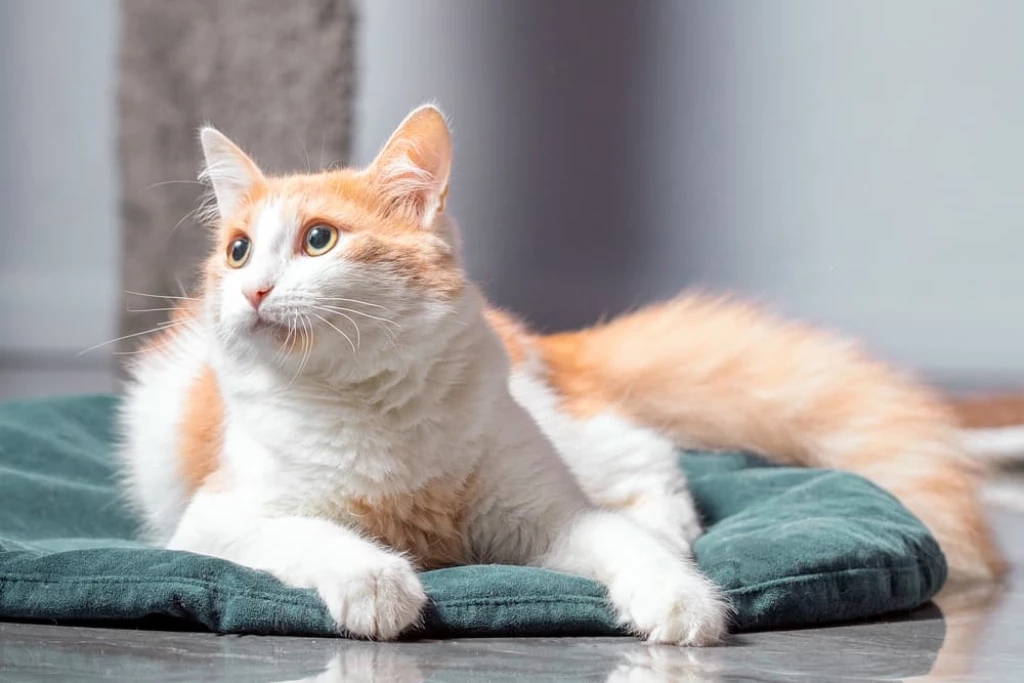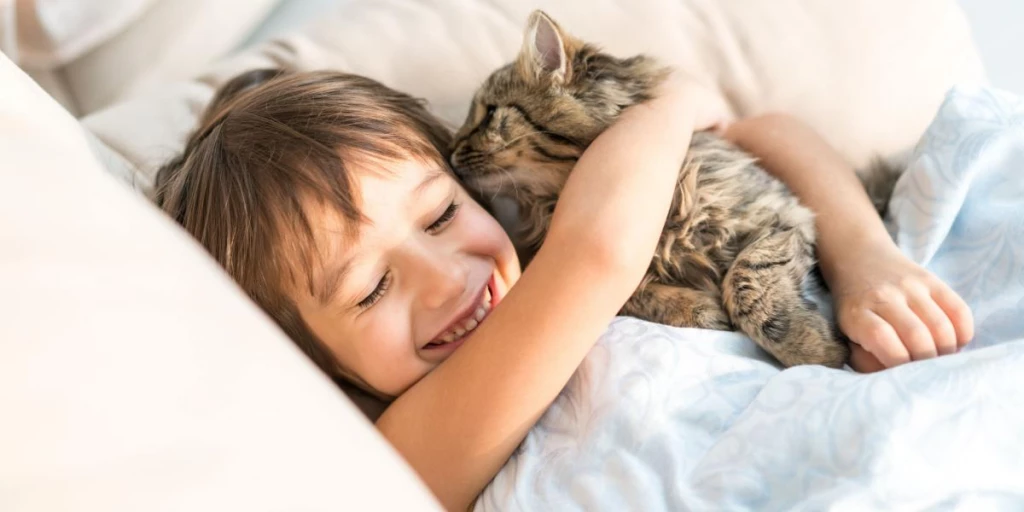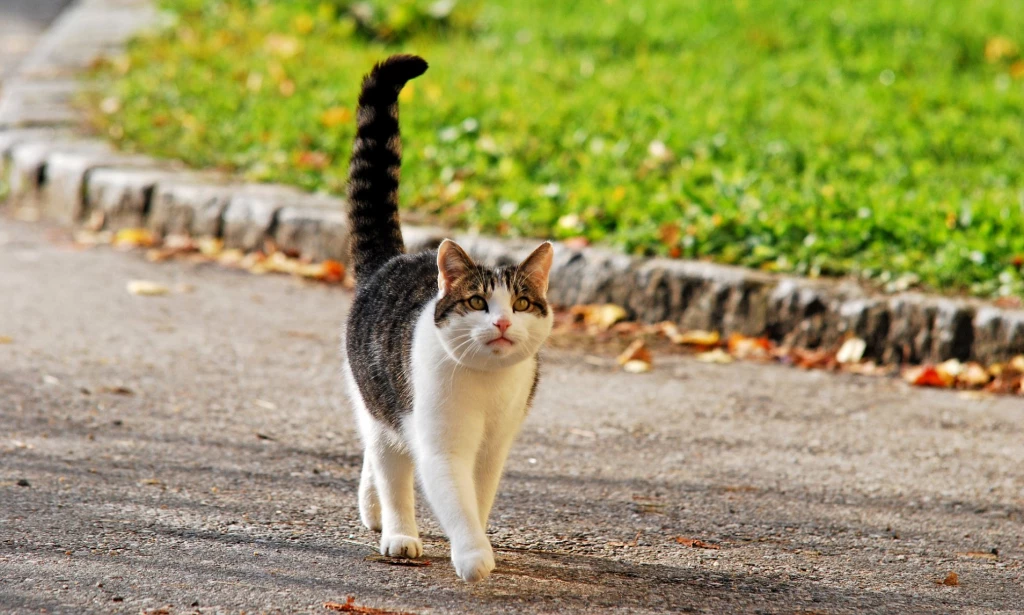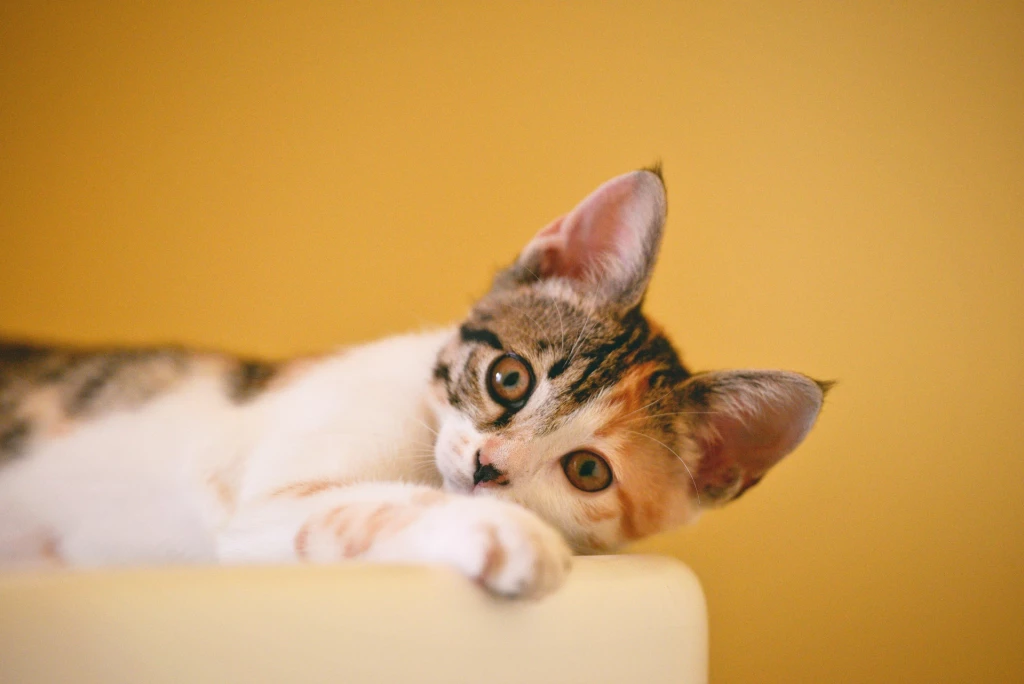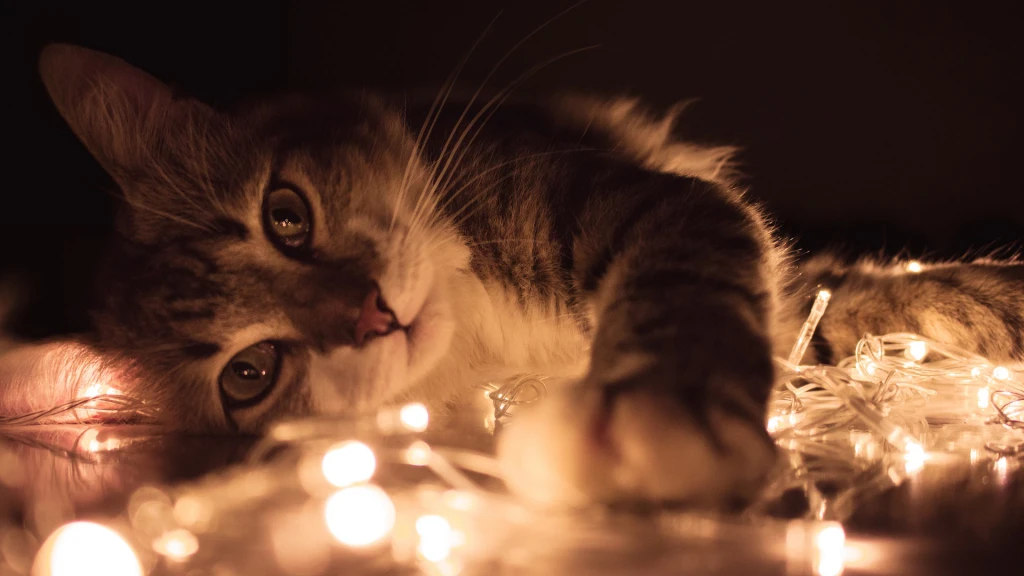Have you ever noticed that your cat's fur is not as smooth and shiny as it used to be? Have you ever felt some lumps or bumps on your cat's coat when you pet them? If so, you may be wondering why your cat's fur has gone lumpy and what you can do about it.
Lumpy fur is a common problem that many cat owners face. It can affect your cat's appearance, health, and comfort. It can also make you worry about your cat's well-being and happiness. But don't panic! Lumpy fur is not a life-threatening condition and it can be fixed with some simple steps.
In this blog post, we will explain the 12 most common causes of lumpy fur in cats and how to fix them. We will also provide some general tips on how to keep your cat's fur healthy and smooth. By the end of this blog post, you will have a better understanding of why your cat's fur has gone lumpy and what you can do to help them.
So if you are ready to learn more about your cat's fur and how to make it look beautiful and luscious again, keep reading!
Lack Of Self-Grooming
One of the main reasons why your cat's fur may have gone lumpy is that your cat is not grooming itself enough. Grooming is an essential part of a cat's daily routine, as it helps them keep their fur clean, shiny, and healthy. When cats groom themselves, they use their tongue and teeth to spread their natural oils throughout their coat, which moisturizes their skin and prevents dryness and dandruff. They also remove any loose or dead hairs that may otherwise get tangled or matted in their fur.
However, sometimes cats may stop grooming themselves as often or as thoroughly as they should. This can happen for various reasons, such as:
- Fur tasting bad: If you have applied any topical products on your cat's fur, such as flea and tick treatments, shampoos, or sprays, your cat may not like the taste or smell of them and avoid licking them off. This can leave their fur greasy, sticky, or smelly, and make it more prone to matting.
- Dental pain: If your cat has any dental problems, such as tooth decay, gum disease, or mouth ulcers, grooming can be painful and uncomfortable for them. They may avoid using their mouth to groom themselves and neglect certain areas of their fur, especially around their head and neck.
- Stress or illness: If your cat is feeling stressed or unwell, they may lose interest in grooming themselves and focus on other things, such as hiding, sleeping, or eating. Stress or illness can also affect your cat's immune system and make them more susceptible to skin infections or parasites that can damage their fur.
How To Fix Lumpy Fur Caused By Lack Of Self-Grooming
If your cat's fur has gone lumpy due to lack of self-grooming, you can help them by gently brushing their fur with a soft-bristled brush or comb to remove any mats or tangles. You can also try to encourage your cat to groom itself more often by offering treats, toys, or praise whenever they groom themselves. You can also make their fur taste better by using a mild shampoo or a flavored spray that is safe for cats.
However, if your cat has any dental problems or other health issues that prevent them from grooming properly, you should consult your veterinarian for advice and treatment. Your veterinarian may prescribe medication or perform dental procedures to help relieve your cat's pain and improve their oral health. Your veterinarian may also check for any other underlying causes of your cat's lack of self-grooming, such as stress, illness, or parasites, and provide appropriate treatment.
Mats Or Tangles
Another common reason why your cat's fur may have gone lumpy is that your cat has developed mats or tangles in their fur. Mats or tangles are clumps of fur that are stuck together and cannot be easily separated. They can form when your cat's fur becomes dirty, wet, oily, or curly, and when your cat sheds their undercoat and the loose hairs get trapped in the topcoat.
Mats or tangles are most likely to occur in areas where there is a lot of friction or movement, such as between the legs, around the collar, under the chest, or on the tail. They are also more common in long-haired cats, as their fur is more prone to knotting and tangling than short-haired cats.
Mats or tangles can be very painful and harmful for your cat, as they can pull on their skin and cause irritation, inflammation, or infection. They can also harbor parasites, such as fleas or mites, that can feed on your cat's blood and cause itching, allergies, or diseases. Moreover, mats or tangles can reduce your cat's mobility and flexibility, making it harder for them to move around and groom themselves.
How To Fix Lumpy Fur Caused By Mats Or Tangles
If your cat's fur has gone lumpy due to mats or tangles, you can help them by carefully removing them with a brush or comb. You should use a wide-toothed comb or a slicker brush to gently tease out the mats or tangles, starting from the ends and working your way up to the roots. You should avoid using scissors or clippers to cut off the mats or tangles, as you may accidentally injure your cat's skin.
You can also help prevent mats or tangles from forming again by brushing your cat regularly, at least once a week for short-haired cats and daily for long-haired cats. You should also trim your cat's hair if it is too long or curly, especially around the areas where mats or tangles are more likely to occur. You can also use a detangling spray or conditioner to help smooth out your cat's fur and make it easier to brush.
However, if your cat has severe or extensive matting that you cannot handle yourself, you should seek professional help from a groomer or a veterinarian. They can safely remove the mats or tangles without hurting your cat and give you advice on how to keep your cat's fur healthy and smooth.
Dandruff
Another common reason why your cat's fur may have gone lumpy is that your cat has developed dandruff. Dandruff is a condition where your cat's skin produces too many dead skin cells, which flake off and accumulate on their fur. Dandruff can make your cat's fur look dull, dry, and lumpy, and can also cause itching and irritation.
Dandruff can be caused by various factors, such as:
- Dry skin: If your cat's skin is not moisturized enough, it can become dry and flaky. This can happen if your cat is dehydrated, exposed to low humidity, or has a poor diet that lacks essential fatty acids.
- Allergies: If your cat is allergic to something in their environment, such as dust, pollen, or certain foods, they can develop an inflammatory reaction that affects their skin and causes dandruff. Allergies can also make your cat scratch themselves more, which can damage their skin and fur.
- Fungal infections: If your cat has a fungal infection on their skin, such as ringworm, they can develop dandruff as a symptom. Fungal infections can also cause hair loss, redness, or scabs on your cat's skin.
- Nutritional deficiencies: If your cat is not getting enough nutrients from their diet, such as vitamins, minerals, or proteins, they can develop dandruff as a sign of poor health. Nutritional deficiencies can also affect your cat's immune system and make them more prone to infections or parasites that can damage their skin and fur.
How To Fix Lumpy Fur Caused By Dandruff
If your cat's fur has gone lumpy due to dandruff, you can help them by using a mild shampoo designed for cats that can help moisturize their skin and remove the flakes. You can also try using a conditioner or an oil that can help nourish their skin and coat and make them look smoother and shinier.
You can also help prevent dandruff from recurring by improving your cat's diet and hydration. You should provide your cat with fresh water at all times and feed them a high-quality food that contains enough protein and essential fatty acids. You can also supplement their diet with vitamins or minerals if needed.
However, if your cat has persistent or severe dandruff that does not respond to home remedies, you should visit your veterinarian for diagnosis and treatment. Your veterinarian may prescribe medication or topical products that can help treat the underlying cause of dandruff, such as allergies, fungal infections, or hormonal conditions.
Hormonal Conditions
Another potential reason why your cat's fur may have gone lumpy is that your cat has a hormonal condition that affects their metabolism and coat quality. Hormonal conditions are disorders that affect the production or function of hormones in your cat's body. Hormones are chemical messengers that regulate various processes in your cat's body, such as growth, development, reproduction, and energy.
Some of the hormonal conditions that can cause lumpy fur in cats are:
- Hyperthyroidism: Hyperthyroidism is a condition where your cat's thyroid gland produces too much thyroid hormone, which speeds up your cat's metabolism and causes them to burn more calories and lose weight. Hyperthyroidism can also affect your cat's skin and coat, making them dry, brittle, and lumpy. Other symptoms of hyperthyroidism include increased appetite, thirst, urination, heart rate, and activity level.
- Diabetes: Diabetes is a condition where your cat's body cannot produce or use insulin properly, which is a hormone that regulates blood sugar levels. Diabetes can cause your cat's blood sugar levels to become too high or too low, which can affect their health and well-being. Diabetes can also affect your cat's skin and coat, making them dull, greasy, and lumpy. Other symptoms of diabetes include increased appetite, thirst, urination, weight loss, and lethargy.
- Cushing's disease: Cushing's disease is a condition where your cat's adrenal glands produce too much cortisol, which is a hormone that helps your cat cope with stress. Cortisol also affects your cat's metabolism and immune system. Cushing's disease can cause your cat's skin and coat to become thin, fragile, and lumpy. Other symptoms of Cushing's disease include increased appetite, thirst, urination, belly fat, muscle weakness, and infections.
If your cat's fur has gone lumpy due to a hormonal condition, you should consult your veterinarian for diagnosis and treatment. Your veterinarian may prescribe medication or dietary changes to help manage your cat's hormonal condition and improve their coat quality. You should also monitor your cat's health regularly and report any changes or concerns to your veterinarian.
How To Fix Lumpy Fur Caused By Hormonal Conditions
If your cat's fur has gone lumpy due to a hormonal condition, you should consult your veterinarian for diagnosis and treatment. Your veterinarian may prescribe medication or dietary changes to help manage your cat's hormonal condition and improve their coat quality. You should also monitor your cat's health regularly and report any changes or concerns to your veterinarian.
You can also try to improve your cat's coat quality despite their hormonal condition by using a special shampoo, conditioner, or supplement that can help nourish their skin and fur and make them look smoother and shinier. However, you should always consult your veterinarian before using any products on your cat, as some products may interfere with their medication or cause adverse reactions.
How To Keep Your Cat's Fur Healthy And Smooth
In addition to fixing the specific causes of your cat's lumpy fur, you can also provide some general tips on how to keep your cat's fur healthy and smooth. Here are some of them:
- Groom your cat regularly and properly. Grooming your cat is not only a way to remove mats or tangles, but also a way to keep their fur clean, shiny, and healthy. Grooming your cat can also help you bond with them, relax them, and detect any problems early. You should use the right tools and techniques for grooming your cat, such as a brush or comb that suits their hair type and length, and a gentle and calm approach that does not hurt or scare them.
- Provide your cat with a balanced and nutritious diet. Your cat's diet plays a vital role in their fur quality, as it provides them with the nutrients they need to maintain their skin and coat health. You should feed your cat a high-quality food that contains enough protein, essential fatty acids, vitamins, and minerals. You should also avoid feeding your cat any foods that may cause allergies or sensitivities, such as dairy, wheat, or soy.
- Keep your cat hydrated and comfortable. Your cat's hydration and comfort level can also affect their fur quality, as they can influence their skin moisture and temperature. You should provide your cat with fresh water at all times and make sure they drink enough throughout the day. You should also keep your cat in a comfortable environment that is not too hot or cold, humid or dry, or noisy or stressful.
- Visit your veterinarian regularly and follow their advice. Your veterinarian is your best ally when it comes to keeping your cat's fur healthy and smooth. Your veterinarian can check your cat's health and well-being regularly and provide any necessary treatment or prevention measures. Your veterinarian can also give you advice on how to care for your cat's fur according to their specific needs and conditions.
By following these tips, you can help your cat have a beautiful and luscious coat that reflects their inner health and happiness.
Final Thoughts
We hope you enjoyed reading this blog post and learned something new about your cat's fur and how to fix it. Lumpy fur is a common problem that many cat owners face, but it can be easily solved with some simple steps. By following the advice we shared in this blog post, you can help your cat have a healthy and smooth coat that reflects their inner health and happiness.
Thank you for reading this blog post and caring for your cat's fur. We wish you and your cat all the best!
